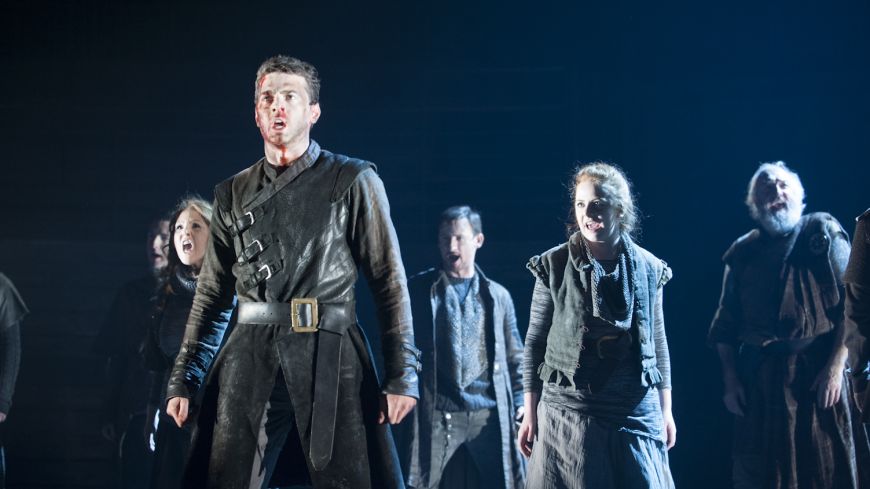
Rona Munro’s trilogy of plays featuring the first three of Scotland’s kings to be named James offers a rare meditation on kingship, family and loyalty. First seen at the Edinburgh International Festival of 2014 by this reviewer and colleagues, they return to the Festival Theatre as part of a further tour of these remarkable productions.
‘James I’ opens with that king still a prisoner of King Henry V, witness to the aftermath the battle of Bauge. The scene offers both interpretation of contemporary Anglo-Scottish relations, the need to deal effectively with the policies of a more populous and powerful neighbour being a constant pre-occupation of Scottish kings in the middle ages, and an introduction to the Stewart kin, each of them convinced of their entitlement to a starring role alongside their royal relation.
Much of ‘James I’ is concerned with that king’s struggle to control the country’s nobility, in particular John Stahl’s rarely less than impressive Murdac Stewart and his wife Isabella, portrayed by Blythe Duff, whose performances seem to improve with time in the manner of a very fine wine.
Rosemary Boyle, as James’ Queen, Joan, gives an excellent impression of a young woman who in another age might gain an A+ in Domestic Science but is nonetheless overwhelmed by the complexities of the Scottish court. We share her appalled terror as the forces of aristocratic anarchy seek to impose themselves on a king determined to uphold the rule of law but always compromised by his own imposition of that same law.
His father’s untimely death at treacherous hands brings a young James II to the throne. The first act of ‘James II’ might well be interpreted as taking place in the mind of an understandably troubled teenager, whose widowed mother has taken a dubious opportunist in John Douglas of Balvenie for her second husband. Along with his brothers, Balvenie proves as intractable a problem for the young James as his Stewart relatives had been for his father. James’ repeated attempts at physical as well as mental retreat from recurrent difficulties are completely understandable, not ones even the charming distractions of his young Flemish wife can relieve.
Munro’s emphasis lies in the difficulties strewn in the way of many European monarchs of the age, trying to contain and channel the energies of their nobility into more productive lifestyles than that of constant warfare and rebellion. Her feminist sympathis offer considerable scope to the female members of the company that Rosemary Boyle, Blythe Duff and Sally Reid in particular rise to with great élan.
If some of the male actors' interpretations seem to live up to W.H. Auden’s observation that ‘the past is another country’ whose ways of doing and being they don’t always embody, this has nothing to do with Munro’s sharp and clear-eyed writing.
Finally, it would be beyond churlish not to mention the set created by Jon Bausor and his team, deliberately reminiscent of both the Shakespeare-era stage and (one suspects) the threatening adventure playground created for the BBC version of Shakespeare’s History plays, its added symbolism of a massive medieval sword thrust, as it were, into the heart of the stage appears as something that, like these plays themselves, you can hardly miss.
James I and James II show separately and run til 13th Feb
Read Irene Brown's review of James I
Read Justine Hunter's review of James II

